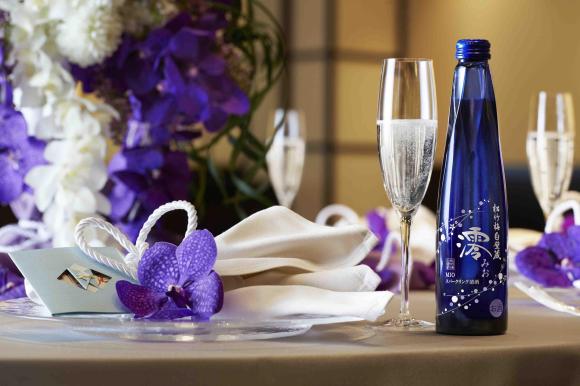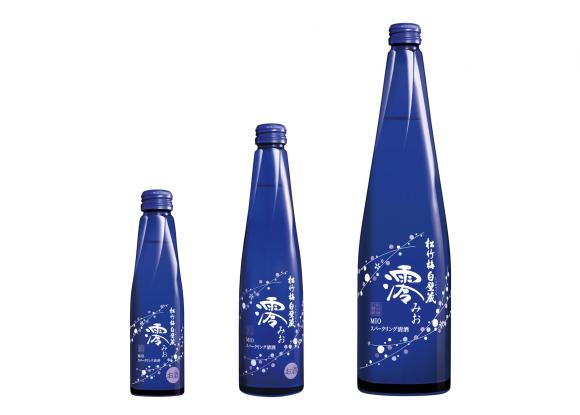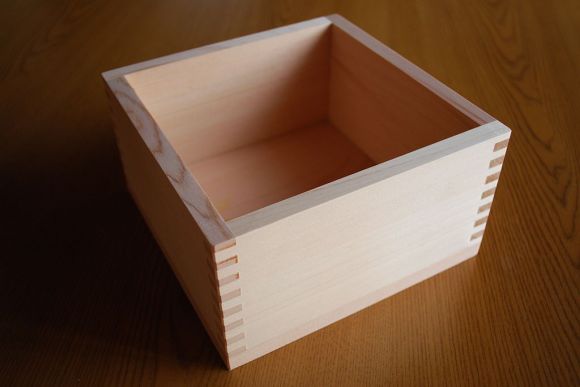
While I like to think of myself as one of the more cynical and irreverent – as well as dashingly handsome and sharply dressed – writers here at RocketNews24, I occasionally do come across a subject I’d rather approach with a more measured, sober point of view. Like, for example, the subject of sweet, sweet booze!
It might come as a shock to people whose primary brushes with Japanese culture come from visits to their local, non-Japan-based Japanese teppan restaurant or izakaya, but sake – the country’s national alcoholic beverage – is kind of in dire straights nowadays. The traditional, rice-based drink basically has been getting steamrolled by imported drinks like beer and wine, which have less of a “learning curve” to fully enjoy and thus appeal more to young people in Japan.
Since the 1970s, when the drink still faced stiff competition from domestic beers and imported wines but was doing pretty well for itself, domestic sake sales have hit a wall, with the number of brewers falling from nearly 5,000 in that period to just 1,000 or so now. Some have turned to foreign markets, even looking into new ways to pair sake with western food, while others have tried to innovate with sparkling sake – which is kicking ass in sales numbers and might just prove to be the drink’s savior.
The main appeal of sparkling sake for a lot of people is the increased sweetness, which appears to be a side effect of the brewing method, making it taste more akin to a champagne. Despite sake being translated as “rice wine” in a lot of other countries, the basic brewing method followed is more closely related to that of beer and, let’s be honest, sake tastes nothing at all like wine. So, for a lot of consumers, Japanese women especially, sparkling versions offer a sweeter, more accessible drink that’s also lower in alcohol.
There’s also the classiness factor. Like champagne, sparkling sake is served in a thin flute and has enough universal appeal and wow factor to be perfect for celebratory events. On the other hand, sake was traditionally served in all manner of odd vessels, not least of which the iconic, square masu wooden box – which, to foreigners, can give the drink a sort of rustic charm, but is seen as somewhat archaic and old-fashioned to modern Japanese.
▼ Yes, we have Lost in Translation to thank for knowing what this is, too.
Sparkling sake hit the mainstream market in 2011 with the introduction of Takarashuzo Brewery’s “Mio” label – which the company introduced, not surprisingly, in a groping effort to revitalize sake sales. Takarashuzo says sales of the label had increased four times by 2013.
Will sparkling sake turn Japan’s traditional boozy beverage’s luck around? It’s hard to say, but major labels like Mio appear to be making significant headway both at home and abroad, which is a great sign. Well, I guess this means a thorough, RN24-funded taste test is in order!
Source: Entabe
Photos: Takarashuzo Press Release, Wikipedia



 Sparkling sake in a can seeks to solve a problem that sometimes keeps sake off the dinner table
Sparkling sake in a can seeks to solve a problem that sometimes keeps sake off the dinner table Why is it so hard to find hot sake in convenience stores in Japan?
Why is it so hard to find hot sake in convenience stores in Japan? Limited run of commemorative Ed Sheeran sake on sale from 8 April
Limited run of commemorative Ed Sheeran sake on sale from 8 April Real-life sake brands become handsome anime boys who promise to “get you drunk” for new series
Real-life sake brands become handsome anime boys who promise to “get you drunk” for new series Sake-brewing company produces one-chug wonder: boozy boba in a bottle【Taste test】
Sake-brewing company produces one-chug wonder: boozy boba in a bottle【Taste test】 How to order snacks on a Shinkansen bullet train in Japan
How to order snacks on a Shinkansen bullet train in Japan Japan’s new difficult-to-drink-from beer glass protects your liver, but it’s a brutal experience
Japan’s new difficult-to-drink-from beer glass protects your liver, but it’s a brutal experience Burger King Japan suddenly adds Dr. Pepper and Dr. Pepper floats to its menu nationwide
Burger King Japan suddenly adds Dr. Pepper and Dr. Pepper floats to its menu nationwide Demon Slayer: Kimetsu no Yaiba gets new roller coaster attractions and food at Universal Studios Japan
Demon Slayer: Kimetsu no Yaiba gets new roller coaster attractions and food at Universal Studios Japan Hello, cosmetics! Clinique teams up with Hello Kitty this summer for first-time collaboration
Hello, cosmetics! Clinique teams up with Hello Kitty this summer for first-time collaboration Kyoto Tower mascot termination reveals dark side behind cute Japanese characters
Kyoto Tower mascot termination reveals dark side behind cute Japanese characters Nintendo history you can feel – Super NES, N64, and GameCube controllers become capsule toys
Nintendo history you can feel – Super NES, N64, and GameCube controllers become capsule toys This Nara workshop has been making deer crackers for more than 100 years and offers tours【Photos】
This Nara workshop has been making deer crackers for more than 100 years and offers tours【Photos】 High-fashion Totoro cuddle purse is like an elegant stroll in the forest【Photos】
High-fashion Totoro cuddle purse is like an elegant stroll in the forest【Photos】 Legendary Melon Bread by Tokyo Banana returns after 20-year absence【Taste Test】
Legendary Melon Bread by Tokyo Banana returns after 20-year absence【Taste Test】 “The most Delicious Cup Noodle in history” – Japan’s French Cup Noodle wins our heart【Taste test】
“The most Delicious Cup Noodle in history” – Japan’s French Cup Noodle wins our heart【Taste test】 Starbucks releases a cute Frappuccino and Unicorn Cake…but not in Japan
Starbucks releases a cute Frappuccino and Unicorn Cake…but not in Japan McDonald’s Japan’s Soft Twist Tower: A phantom ice cream only sold at select branches
McDonald’s Japan’s Soft Twist Tower: A phantom ice cream only sold at select branches Yabai Ramen: What makes this Japanese ramen so dangerous?
Yabai Ramen: What makes this Japanese ramen so dangerous? Finally! Nintendo Japan expands Switch 8-bit controller sales to everybody, Online member or not
Finally! Nintendo Japan expands Switch 8-bit controller sales to everybody, Online member or not Japanese government wants to build luxury resorts in all national parks for foreign tourists
Japanese government wants to build luxury resorts in all national parks for foreign tourists To combat declining birth rate, Japan to begin offering “Breeding Visas” to foreigners
To combat declining birth rate, Japan to begin offering “Breeding Visas” to foreigners 10 things you should buy at 7-Eleven in Japan
10 things you should buy at 7-Eleven in Japan Studio Ghibli releases anime heroine cosplay dresses that are super comfy to wear
Studio Ghibli releases anime heroine cosplay dresses that are super comfy to wear Woman charged for driving suitcase without a license in Osaka
Woman charged for driving suitcase without a license in Osaka Studio Ghibli unveils My Neighbour Totoro miniature house model
Studio Ghibli unveils My Neighbour Totoro miniature house model Kyoto experiencing problems with foreign tourists not paying for bus fares, but not on purpose
Kyoto experiencing problems with foreign tourists not paying for bus fares, but not on purpose Fighting mild hunger with a Japanese soda that turns into jelly in the stomach【Taste test】
Fighting mild hunger with a Japanese soda that turns into jelly in the stomach【Taste test】 Studio Ghibli’s Howl’s Moving Castle tapestry unveiled in Japan for first time
Studio Ghibli’s Howl’s Moving Castle tapestry unveiled in Japan for first time McDonald’s new Happy Meals offer up cute and practical Sanrio lifestyle goods
McDonald’s new Happy Meals offer up cute and practical Sanrio lifestyle goods Sales of Japan’s most convenient train ticket/shopping payment cards suspended indefinitely
Sales of Japan’s most convenient train ticket/shopping payment cards suspended indefinitely Sold-out Studio Ghibli desktop humidifiers are back so Totoro can help you through the dry season
Sold-out Studio Ghibli desktop humidifiers are back so Totoro can help you through the dry season Japanese government to make first change to romanization spelling rules since the 1950s
Japanese government to make first change to romanization spelling rules since the 1950s Foreigner’s request for help in Tokyo makes us sad for the state of society
Foreigner’s request for help in Tokyo makes us sad for the state of society Ghibli founders Toshio Suzuki and Hayao Miyazaki contribute to Japanese whisky Totoro label design
Ghibli founders Toshio Suzuki and Hayao Miyazaki contribute to Japanese whisky Totoro label design Doraemon found buried at sea as scene from 1993 anime becomes real life【Photos】
Doraemon found buried at sea as scene from 1993 anime becomes real life【Photos】 Tokyo’s most famous Starbucks is closed
Tokyo’s most famous Starbucks is closed Princesses, fruits, and blacksmiths: Study reveals the 30 most unusual family names in Japan
Princesses, fruits, and blacksmiths: Study reveals the 30 most unusual family names in Japan Local Japanese coffee business teams up with local sake brewers to make Sake Coffee drip packs
Local Japanese coffee business teams up with local sake brewers to make Sake Coffee drip packs Japan’s tax agency considers protected designation for Japanese sake
Japan’s tax agency considers protected designation for Japanese sake Brew a gallon of homemade sake with this DIY kit
Brew a gallon of homemade sake with this DIY kit Japanese beer giant Asahi buys British London Pride brewery; U.K. writer hopping mad
Japanese beer giant Asahi buys British London Pride brewery; U.K. writer hopping mad Now you can have karinto crackers flavored with popular sake Dassai!
Now you can have karinto crackers flavored with popular sake Dassai! 348-year-old sake brewery’s newest creation: A special sake just to drink with ramen!
348-year-old sake brewery’s newest creation: A special sake just to drink with ramen! Hokkaido business will age your alcohol under the sea, let you watch it via smartphone
Hokkaido business will age your alcohol under the sea, let you watch it via smartphone Japanese sake brewery launches One Cup Rainbow in honour of the LGBTQ community
Japanese sake brewery launches One Cup Rainbow in honour of the LGBTQ community New Ume Sake Japanese Kit Kat features the flavour of traditional plum wine…with a twist
New Ume Sake Japanese Kit Kat features the flavour of traditional plum wine…with a twist Cups made of kelp from Hokkaido add a touch of umami to whatever you put inside
Cups made of kelp from Hokkaido add a touch of umami to whatever you put inside Grab a clear sparkling drink from Starbucks at a convenience store in Japan and get refreshed!
Grab a clear sparkling drink from Starbucks at a convenience store in Japan and get refreshed! Japan’s most popular sake brand runs full-page ad asking people to stop paying so much for it
Japan’s most popular sake brand runs full-page ad asking people to stop paying so much for it Gekkeikan releases new alcohol-free Japanese daiginjo sake
Gekkeikan releases new alcohol-free Japanese daiginjo sake Yoghurt Sake is the newest Japanese KitKat we need to get our hands on right now
Yoghurt Sake is the newest Japanese KitKat we need to get our hands on right now Don’t know which sake to drink? These handy flavor charts help you pick by region of Japan
Don’t know which sake to drink? These handy flavor charts help you pick by region of Japan
Leave a Reply